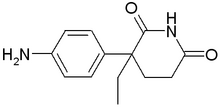Definition
This test is a measure of serum cortisol (also known as hydrocortisone), or urine cortisol, (also known as urinary free cortisol), an important hormone produced by a pair of endocrine glands called the adrenal glands.
Purpose
This test is performed on patients who may have malfunctioning adrenal glands. Blood and urine cortisol, together with the determination of adrenocorticotropic hormone (ACTH), are the three most important tests in the investigation of Cushing's syndrome (caused by an overproduction of cortisol) and Addison's disease (caused by the underproduction of cortisol).
Precautions
Increased levels of cortisol are associated with pregnancy. Physical and emotional stress can also elevate cortisol levels. Drugs that may cause increased levels of cortisol include estrogen, oral contraceptives, amphetamines, cortisone, and spironolactone (Aldactone). Drugs that may cause decreased levels include androgens, aminoglutethimide, betamethasone, and other steroid medications, danazol, lithium, levodopa, metyrapone and phenytoin (Dilantin).
Description
Cortisol is a potent hormone known as a glucocorticoid that affects the metabolism of carbohydrates, proteins, and fats, but especially glucose. Cortisol increases blood sugar levels by stimulating the release of glucose from glucose stores in cells. It also acts to inhibit insulin, thus affecting glucose transport into cells.
The hypothalamus (an area of the brain), the pituitary gland (sometimes called the "master gland") and the adrenal glands coordinate the production of cortisol. After corticotropin-releasing hormone (CRH) is made in the hypothalamus, CRH stimulates the pituitary to produce adrenocorticotropic hormone (ACTH). The production of ACTH in turn stimulates a part of the adrenal glands known as the adrenal cortex to produce cortisol. Rising levels of cortisol act as a negative feedback to curtail further production of CRH and ACTH, thus completing an elaborate feedback mechanism.
There are two methods for evaluating cortisol: blood and urine. The most reliable index of cortisol secretion is the 24-hour urine sample collection, but when blood levels are required or requested by the physician, plasma cortisol should be measured in the morning and again in the afternoon. Cortisol levels normally rise and fall during the day in what is called a diurnal variation, so that cortisol is at its highest level between 6-8 A.M. and gradually falls, reaching its lowest point around midnight. One reason for ordering blood cortisol levels versus a 24-hour urine collection is that sometimes the earliest sign of adrenal malfunction is the loss of this diurnal variation, even though the cortisol levels are not yet elevated. For example, individuals with Cushing's syndrome often have upper normal plasma cortisol levels in the morning and exhibit no decline as the day progresses.
Preparation
When testing for cortisol levels through the blood, a blood specimen is usually collected at 8 A.M. and again at 4 P.M. It should be noted that normal values may be transposed in individuals who have worked during the night and slept during the day for long periods of time.
When testing for cortisol level through the urine, a 24-hour urine sample is collected, refrigerated, and sent to the reference laboratory for examination.
Risks
Risks for the blood test are minimal, but may include slight bleeding from the blood-drawing site, fainting or feeling lightheaded after venipuncture, or hematoma (blood accumulating under the puncture site).
Normal results
Reference ranges for cortisol vary from laboratory to laboratory but are usually within the following ranges for blood:
- Adults (8 A.M.): 6-28 mg/dL; adults (4 P.M.): 2-12 mg/dL
- Child 1-6 years (8 A.M.): 3-21 mg/dL; child 1-6 years (4 P.M.): 3-10 mg/dL
- Newborn: 1/24 mg/dL.
Reference ranges for cortisol vary from laboratory to laboratory but are usually within the following ranges for 24-hour urine collection:
- Adult: 10-100 mg/24 hr
- Adolescent: 5-55 mg/24 hr
- Child: 2-27 mg/24 hr.
Abnormal results
Increased levels of cortisol are found in Cushing's syndrome, excess thyroid (hyperthyroidism), obesity, ACTH-producing tumors, and high levels of stress.
Decreased levels of cortisol are found in Addison's disease, conditions of low thyroid, and hypopituitarism, in which pituitary activity is diminished.
Key Terms
- Addison's disease
- A rare disorder in which symptoms are caused by a deficiency of hydrocortisone (cortisol) and aldosterone, two corticosteroid hormones normally produced by a part of the adrenal glands called the adrenal cortex. Symptoms include weakness, tiredness, vague abdominal pain, weight loss, skin pigmentation and low blood pressure.
- Adrenal glands
- A pair of endocrine glands (glands that secrete hormones directly into the bloodstream) that are located on top of the kidneys.
- Adrenocorticotropic hormone (ACTH)
- Also called corticotropin, this hormone is produced by the pituitary gland to stimulate the adrenal cortex to release various corticosteroid hormones.
- Cushing's syndrome
- A hormonal disorder caused by an abnormally high level of corticosteroid hormones that are produced by the adrenal glands. Corticosteroid hormones control the body's use of nutrients and the excretion of salts and water in the urine. Symptoms include high blood sugar levels, a moon face, weight gain, and increased blood pressure
Further Reading
For Your Information
Books
- Cahill, Mathew. Handbook of Diagnostic Tests. Springhouse Corporation, 1995.
- Jacobs, David S. Laboratory Test Handbook, Fourth Edition. Lexi-Comp Inc., 1996.
- Pagana, Kathleen Deska. Mosby's Manual of Diagnostic and Laboratory Tests. Mosby, Inc., 1998.
Gale Encyclopedia of Medicine. Gale Research, 1999.



